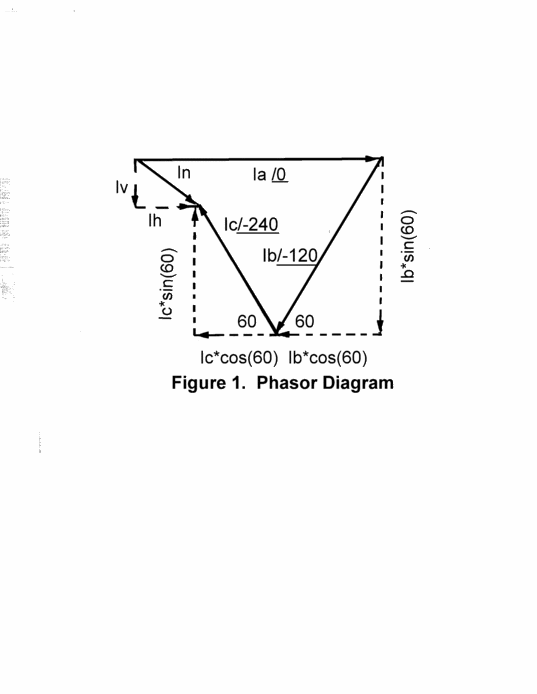Derivation of formula for neutral current
The basis for the formula is the "vector" addition In = Ia + Ib + Ic. I put vector in quotes, because it is really a phasor. They can be represented in polar format (magnitude and angle) and rectangular format (real and imaginary) as complex numbers. The "vector" addition is really the addition of complex numbers. To get just the magnitude of In you take the square root of the real part squared plus the imaginary part squared.
The real part of X at Y degrees is X cos Y and the imaginary part is X sin Y. So the magnitude of In is (using capital for magnitude and small for the phase angle, and just ^ for squared):
sqrt( (Acosa+Bcosb+Ccosc)^ + (Asina+Bsinb+Csinc)^)
Then multiply the squares out to get terms like
A^cos^a + 2AcosaBcosb + etc
Then group the common parts for A, B, and C, like
A^(cos^a+sin^a) + 2AB(cosacosb+sinasinb) + etc
then use trig identities: sin^x + cos^x = 1
and sinxsiny+cosxcosy = cos(x-y)
and you get:
sqrt(A^ + B^ + C^ + 2ABcos(a-b) + 2BCcos(b-c) + 2ACcos(a-c) )
This is general for any angles. Assume the angles are a=0, b=120, and c=-120 (no attempt to match actual wiring practices for the angles

), plug those numbers in and you get (all the cos are -0.5):
sqrt(A^ + B^ + C^ - AB - BC - AC)
Q.E.D.


